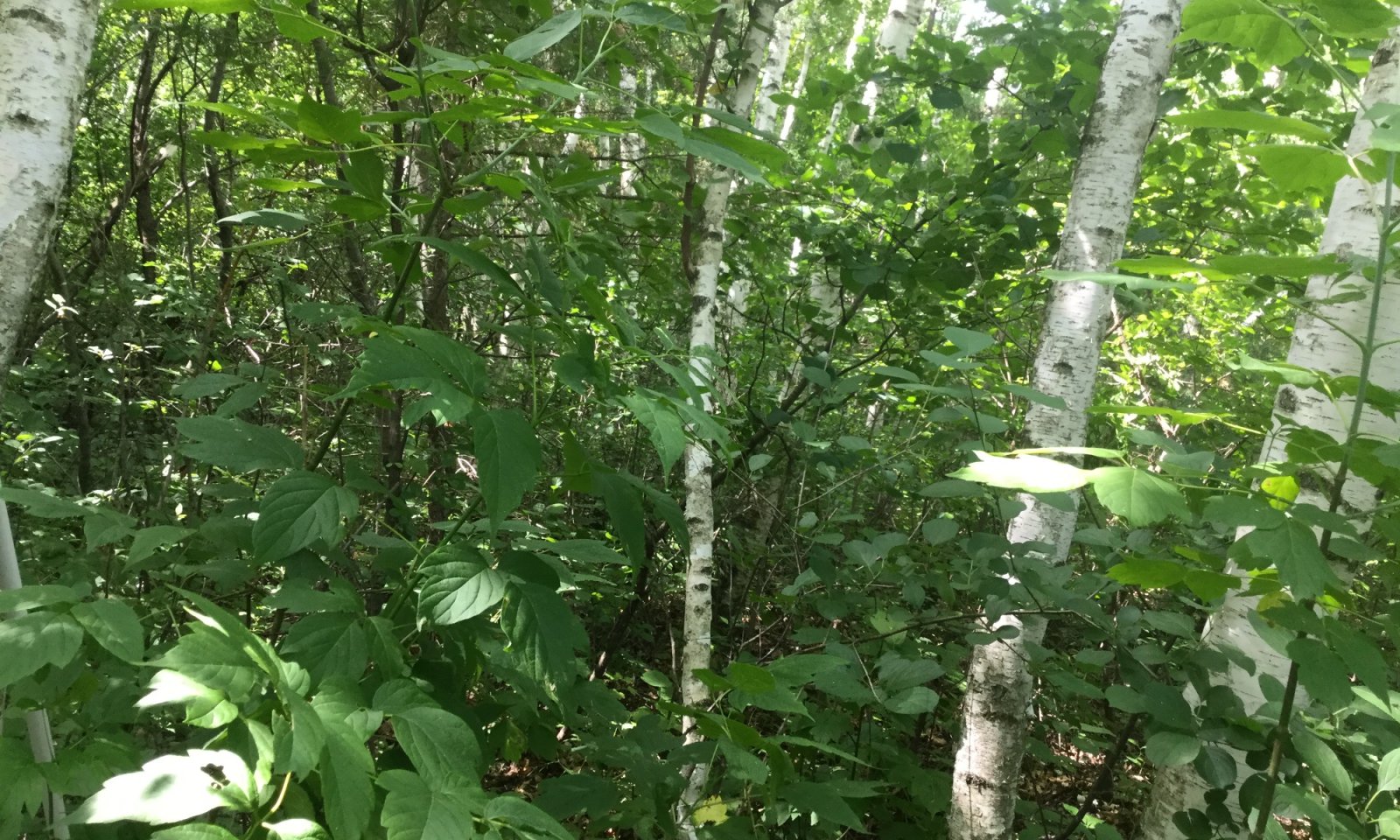
Dry Sandy Bedrock Uplands
Scenario model
Current ecosystem state
Select a state
Management practices/drivers
Select a transition or restoration pathway
-
Transition T1A
Major stand replacing disturbance such as blow-down or clear-cutting in conjunction with fire.
More details -
Transition T1B
Removal of forest vegetation and tilling.
More details -
Restoration pathway R2A
Disturbance-free period 70+ years.
More details -
Transition T2A
Removal of forest cover and tilling for agricultural crop production.
More details -
Transition T3A
Cessation of agricultural practices, natural, or artificial afforestation.
More details -
No transition or restoration pathway between the selected states has been described
Target ecosystem state
Select a state
Description
Tree species on these sites are mostly fire adapted and it is likely that the intensity and frequency of fires controlled the plant community composition in presettlement time. It is likely though that the same species, perhaps with the exception of Jack pine, could maintain themselves on these sites. White pine would have likely dominated these sites in the advanced reference state. Red maple would be less likely with more frequent or higher intensity fire.
Submodel
Description
Following disturbances described in Transition T1A a wide range of forest community phases may come into temporary existence, the three most common ones are described here.
Submodel
Mechanism
Clear cutting with initial control of competing vegetation, or stand-replacing fire, prepare the site for occupancy by shade intolerant species. This may occur through natural regeneration or by planting.
Mechanism
Removal of forest cover, tilling and application of other agricultural techniques to grow agricultural crops.
Mechanism
This pathway relies on natural succession with only minor disturbances for 70+ years to allow full canopy development. Particularly this pathway is allowing for the regeneration and growth of a White pine super canopy and greater development of the understory species present.
Mechanism
Removal of forest cover, tilling and application of other agricultural techniques to grow agricultural crops.
Mechanism
Abandonment of agricultural practices and allowing natural vegetation to colonize the site or apply artificial afforestation. Whether re-vegetation or planting is allowed it is likely to require over 100 years to return to the reference state via the early to mid-successional state.
Model keys
Briefcase
Add ecological sites and Major Land Resource Areas to your briefcase by clicking on the briefcase (![]() ) icon wherever it occurs. Drag and drop items to reorder. Cookies are used to store briefcase items between browsing sessions. Because of this, the number of items that can be added to your briefcase is limited, and briefcase items added on one device and browser cannot be accessed from another device or browser. Users who do not wish to place cookies on their devices should not use the briefcase tool. Briefcase cookies serve no other purpose than described here and are deleted whenever browsing history is cleared.
) icon wherever it occurs. Drag and drop items to reorder. Cookies are used to store briefcase items between browsing sessions. Because of this, the number of items that can be added to your briefcase is limited, and briefcase items added on one device and browser cannot be accessed from another device or browser. Users who do not wish to place cookies on their devices should not use the briefcase tool. Briefcase cookies serve no other purpose than described here and are deleted whenever browsing history is cleared.
Ecological sites
Major Land Resource Areas
The Ecosystem Dynamics Interpretive Tool is an information system framework developed by the USDA-ARS Jornada Experimental Range, USDA Natural Resources Conservation Service, and New Mexico State University.
